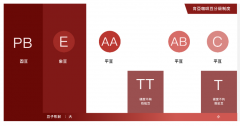Classification of different grades of washed Kenya coffee beans
Under the influence of British colonization, Kenyans love to drink coffee. In Kenyan restaurants, drinks have to be paid separately, but coffee is free. Kenya's history of growing coffee dates back to the late 19th century, when the British established a complete system of cultivation and quality control.
After independence in 1964, Kenya's coffee industry continued to develop from the existing foundation and is now known as a high-quality bean producing country in the world. In particular, they established an auction system and successfully escaped the exploitation of smallholder farmers in other bean producing countries (so-called "Fair Trade Coffee").
At present, there are hundreds of thousands of small coffee farmers and several large plantations in Kenya. All coffee beans will be sent to the Kenya Coffee Bureau. The established Nairobi Coffee Exchange will conduct public auctions. As long as the quality is good, there will be a good price. Naturally, it will have an incentive effect on small farmers. Under the virtuous circle, the high quality of Kenya coffee beans has always been obvious to all.
Central Kenya is ideal for coffee growing at altitudes above 1,500 meters, with small coffee plantations along the roads.
Kenyan coffee beans are strictly graded. Coffee beans taken from washing plants are divided into AA or AA+, AB, PB, C, E, TT and T according to size, shape and hardness.
Kenya AAFAQ,kenyaAA,FAQ
Country: Kenya
Altitude: 1400-2000 m
Treatment method: washing
Rating: AA FAQ
Varieties: SL 28, SL 34
Flavor description: Black plum, blackcurrant a generic ending
Kenya AB TOP
Country: Kenya
Altitude: 1400-2000 m
Treatment method: washing
Grade: AB TOP
Varieties: SL 28, SL 34
Flavor description: Black plum, elegant acidity, fine, thick palate, blackcurrant
Kenya PB PLUS Kenya PB PLUS
Country: Kenya
Altitude: 1400-2000 m
Treatment method: washing
Grade: PB PLUS
Varieties: SL 28, SL 34
Flavor description: Bright acid value, sweet, blackcurrant, soft taste
Important Notice :
前街咖啡 FrontStreet Coffee has moved to new addredd:
FrontStreet Coffee Address: 315,Donghua East Road,GuangZhou
Tel:020 38364473
- Prev

The origin of the top ten brands of coffee in the world
First place: Ethiopia / coffee birthplace annual output: 396000 tons Top Ten. 01. Ethiopia a cup of water washed Yega Chuefei (Yirgacheffe) can bring out the aroma of fine flowers and sweet fruit, unparalleled; or sun-treated Sidamo, sweet, atmospheric, is the most classic top representative of Ethiopian coffee. LorenzoPerki, Director of Education, CuveCoffee
- Next

Kenya aa: what is Kenya aa and what is the baking degree
As a coffee drinker, you should often see such terms as Kenyan coffee or even Kenyan AA in coffee shops. We may know that Kenya refers to the origin of coffee beans, but what does AA mean? In this article, let's talk about Kenya Coffee and how it is graded. Kenya is a country located in East Africa near the Indian Ocean. Because it was colonized by Britain, it was established in the 19th century.
Related
- Beginners will see the "Coffee pull flower" guide!
- What is the difference between ice blog purified milk and ordinary milk coffee?
- Why is the Philippines the largest producer of crops in Liberia?
- For coffee extraction, should the fine powder be retained?
- How does extracted espresso fill pressed powder? How much strength does it take to press the powder?
- How to make jasmine cold extract coffee? Is the jasmine + latte good?
- Will this little toy really make the coffee taste better? How does Lily Drip affect coffee extraction?
- Will the action of slapping the filter cup also affect coffee extraction?
- What's the difference between powder-to-water ratio and powder-to-liquid ratio?
- What is the Ethiopian local species? What does it have to do with Heirloom native species?

